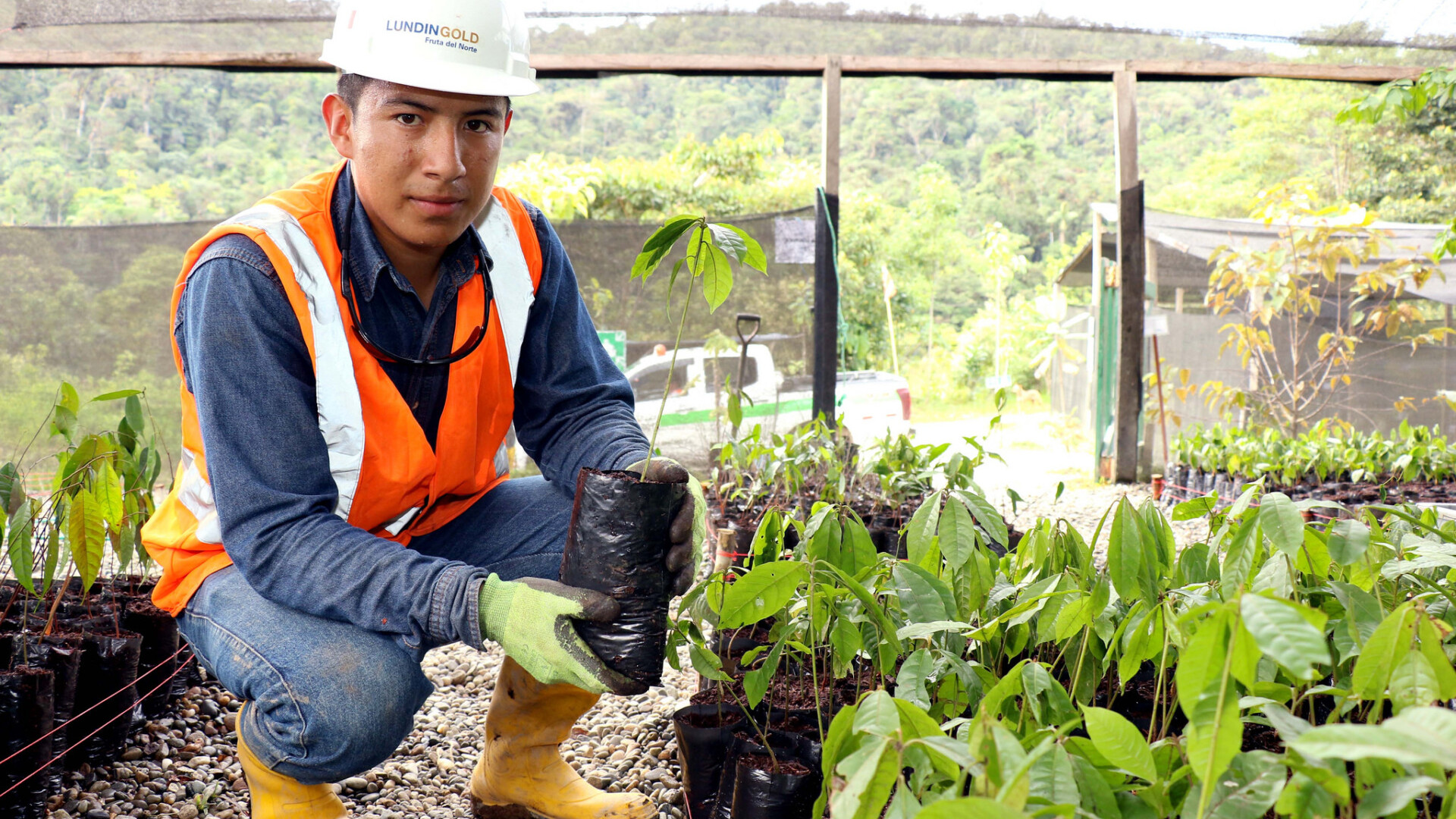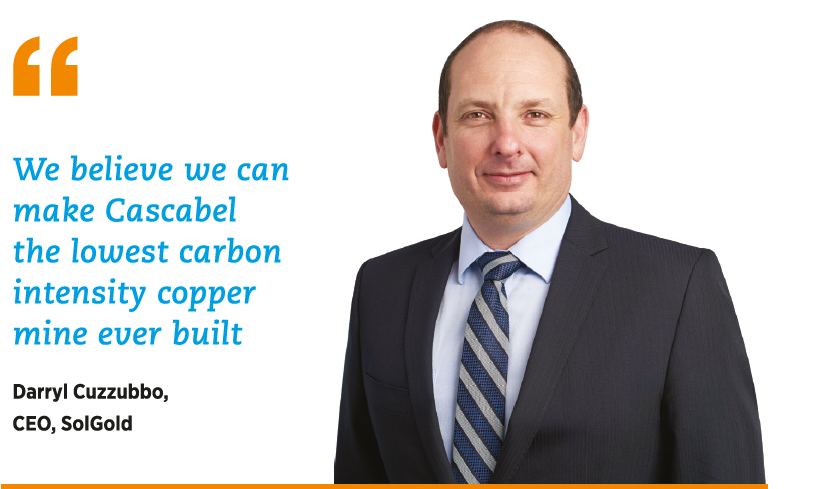Defining sustainable mining
Metals mining is essential to fight climate change but the industry must do a better job of cutting emissions…

Mining is essential to fight climate change but the industry must do a better job of cutting emissions…
There were moments when this year’s PDAC mining convention in Canada felt more like a meeting of environmental activists than natural resource investors. Almost every CEO announced ambitious carbon cutting plans or stressed their commitment to protect the natural ecosystems around their mine. It’s a dramatic shift from only a decade ago. Of course, there are clear financial incentives: having an environmentally-sound mining operation helps to avoid protests and also attract lower-cost financing.
But there is also a far more fundamental motive. Future-facing metals, like copper, nickel, cobalt and lithium, are touted as the solution to global warming because they allow us to shift our energy consumption from carbon-based fossil fuels to non-emitting renewables. But the green credentials of these metals are undermined by the fact that energy-intensive mining and metallurgical processes are a major contributor of emissions. Consultancy McKinsey estimates that mining is responsible for up to 7% of the world’s greenhouse gas (GHG) emissions every year. If the mining industry really wants to convince stakeholders – from host governments to the next generation of professionals – that it is part of the solution to global warming, then it needs to cut emissions.
Sustainable mining
It is easy for politicians and CEOs to make ambitious long-term green pledges while ignoring the very real difficulties in making that happen. But there are lots of low-hanging fruit that could drastically cut mining-related emissions. That is especially true in Latin America, which has the world’s greenest power grid.

In Peru, Victor Gobitz, CEO of Antamina, the country’s largest mine, is determined to use renewable energy to reduce emissions. “Peru has not fulfilled its incredible hydroelectric potential and I hope that we see more growth there. The country will need more electricity eventually because we miners are switching as many energy-intensive operations as possible to the grid. Take Antamina for example. We are already measuring our carbon footprint because our four partners have very ambitious emissions targets for 2030 and 2050. The first step is to ensure that all our electricity is powered by renewable energy. The next, more complicated step, is to tackle the transport of minerals, which our second-largest use of energy. That means switching our trucks to electric, which will involve a higher capex, but we are committed to doing so.”
Because Latin America is already the world’s largest producer of key climate change metals, such as copper, legacy operations will have to be fitted with new technology to reduce emissions. Another important example is Minsur, whose operations in Peru and Brazil make it the second-largest tin producer in the world. “We are working on a roadmap to be carbon neutral by 2050”, says Minsur’s Corporate Affairs Director, Gonzalo Quijandria. “We are embracing the circular economy by applying modern technology to our old tailing dams, that allow us to recover tin. We know that Minsur is an important producer of the metals the world needs to fight climate change and we are determined to be a responsible one.”
In essence most of the heavy lifting will be done by large companies cutting emissions at the biggest mines. First Quantum Minerals is the world’s sixth-largest copper producer having doubled its copper production in the last ten years. “We have also been making plans to shift more of our electricity consumption to renewable sources”, says Tristan Pascall, CEO of First Quantum Minerals. “Across the group we aim to cut greenhouse gas emissions 30% by 2030 and 50% by 2050. So that will involve decarbonising our operations in Panama. However, we realise that our current coal power station plays an important role in stabilising prices across Panama’s electricity grid so we have to be careful about how we phase it out.”
Increased costs
New technologies can help miners reduce the GHG emissions of their operations but this will add to costs, at least in the short to medium term.
“We want to reduce GHG emissions and lower the carbon footprint of our clients’ operations”, says Darrell White, Executive General Manager for the Americas at Thiess, the world’s largest mining service company. “To that end, we are part of the Hydrogen Consortium, which is looking at how that clean fuel can be applied in mining. We are also part of Charge On – the innovation challenge to increase the electrification of mining operations. There are some steps, such as replacing diesel with natural gas, that don’t cut emissions completely but make important reductions.”
International mining focused consultancy, WSP, is the largest professional services firm in Peru, with 700 employees in the country. And WSP Peru Country Manager Gonzalo Covarrubias is betting big on sustainable mining. “Currently, mining processing and transportation of metals is high carbon and energy intensive. For instance, a relevant source of C02 emissions are the fossil-fuelled trucks used to transport the ore. As a first step, making that transport more efficient reduces those emissions. Switching to electric or hydrogen trucks, which some mines are experimenting with, can cut those emissions completely. There are several initiatives from the main miners to achieve theirs of the net zero targets.”
The question is if miners are willing to pay for expensive upgrades. “The mining companies will become more willing as time goes on”, says White, “because they have all made ambitious commitments, in writing, to recue their emissions by 2030 and 2050. Inherently the mining industry knows that low-carbon mining will require more investment although nobody – and that includes Thiess – knows exactly how much it will cost from a capital perspective or an operation perspective. The thing is, carbon taxes will become more common, so there will be a cost one way or another. I would say there is an awareness of increased costs. Maybe miners don’t feel an urgency to make that investment now but they understand that eventually they will have to.”
Covarrubias also believes the mining industry is ready to pay. “My master’s degree is in sustainability, and I have noticed a big difference over the last five years. Before, some companies talked about corporate social responsibility and how to get good PR, now there are real ESG targets and commitments in place. Shareholders, employees and communities are now demanding that mining companies have a positive impact and consider these trends in their projects and operations, so I am optimistic about the future.”
New projects
Retroactively cleaning up existing mega mines is vital to reducing mining’s GHG emissions. However, given the world will need to rapidly increase copper production, any new mines also have to be low emitters. Darryl Cuzzubbo, CEO of SolGold, a London-listed junior that is developing Cascabel, one of the world’s largest new copper projects, believes that new jurisdictions like Ecuador have an advantage in this new era of low-carbon mining.
“Ecuador can be a leader in sustainable mining but it won’t be easy. There are challenges in the country. But I always think back two decades, to when BHP Billiton built one of the world’s most technically-advanced aluminium smelters in war-torn Mozambique. The country had just emerged from years of civil war and had practically none of the relevant skill sets. But Billiton, as it was known back then, worked with the locals to create this world-class operation. Indeed, sometimes having a fresh jurisdiction, with none of the bad practices of older mining, can be an advantage.”
It's not just new jurisdictions that have the advantage. Mining projects being designed now, tend to have a much lower carbon footprint than projects 20 years ago. “We believe we can make Cascabel the lowest carbon intensity copper mine ever built”, says Cuzzubbo. “It will be connected to hydro power, while the concentrate will be sent by pipeline downhill. The water will be self-contained to avoid contamination. We will have a heavy bias towards electric vehicles underground, which will further reduce emissions. These facts will help us bring NGOs onboard. Indeed, it already helps that we have a great example of responsible mining in Ecuador with Lundin Gold.”
Large new projects, like Cascabel, that can deliver globally-significant amounts of low-carbon copper are needed to fight climate change. The trouble is that in the last ten years, community protests and unclear government rules have made it harder to build new mines across the world. Meanwhile falling copper grades, mean operations are likely to use more energy per lb of copper produced. We explore the looming copper shortfall elsewhere in this report. But it is worth noting here that if the world wants to slow global warming it will need to streamline the environmental hurdles to developing mines. That seems counter-intuitive but essentially mining companies need to do a better job of persuading governments, NGOs and communities that the industry is humanity’s best chance to beat climate change.